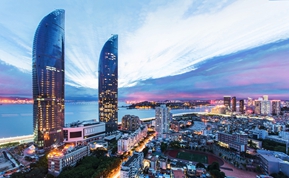FDI outflow from developing countries hits a record
Though foreign direct investment (FDI) flows mainly into developing countries, capital flowing out of developing countries also hit a record high, according to the World Investment Report 2014, which was issued at the 18th China International Fair for Investment & Trade on Sept 8-11, in Xiamen, Fujian province.
The report revealed that global FDI increased to $1.45 trillion in 2013, increasing by 9 percent year on year.
The numbers showed the features of global FDI trends.
Developing economy entities held the lead in the global FDI flow in 2013. FDI inflow into developed countries reached 566 billion dollars, which increased by 9 percent and occupied 39 percent of the global total quantity, while the developing countries contributed to 778 billion dollars and 54 percent of the total flow. In addition, transitional economy entities attracted 108 billion dollars, and seized hold of half the seats in the top 20 FDI inflow destinations with developing counties.
Asian developing countries attracted most FDI and far more than the European Union, the traditional FDI winner. Other main developing areas also saw the growth of FDI inflows, such as 4 percent in Africa and 6 percent in Latin America and the Caribbean area (not including the offshore financial centers.)
The FDI outflow from developing countries also hit a record high. More subsidiary corporations that had been set up in developing countries by developed countries were acquired by local enterprises. The FDI outflow from developing countries and transitional economy entities came to 553 billion dollars, which was 39 percent of global volume, compared with 12 percent at the beginning of the century.
The numbers also indicated a positive FDI trend that poor areas depend less on the extractive industries. An investment value list, which was issued by Africa and the least developed countries, attached 90 percent values to manufacturing and service industries.
Globally, countries make most of their investment policies to promote investment and free trades, while the regulation and restriction investment laws are also increasing, at a rate of 27 percent in 2013.
Why Xiamen
-

Xiamen is one of the most economically competitive cities in China and was one of the first Special Economic Zones on the Chinese mainland. As a vice-provincial city independently listed on the State development plan, it has provincial-level authority in economic administration and local legislative power. In 2010, the Xiamen SEZ was expanded to cover the entire municipality. Today, Xiamen is a modern and international port city.
